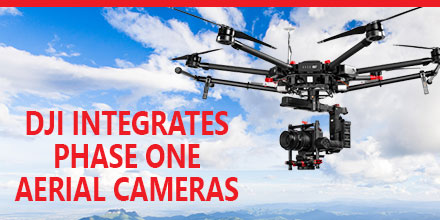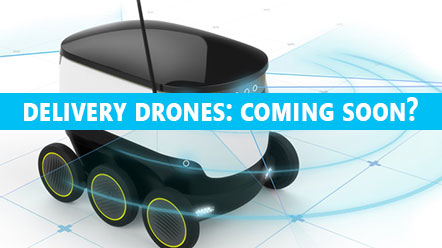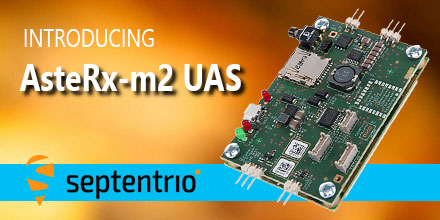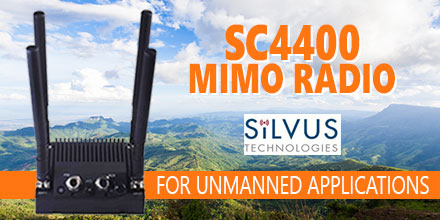
Phase One Industrial recently announced the full integration of its iXU and iXU-RS aerial cameras with
DJI’s M600 and
M600 Pro drones. Built using DJI’s SDK, this is just the latest drone platform supported by Phase One Industrial.
Phase One was the first to deliver 100-megapixel medium format aerial cameras. Since then, Phase One has continued to innovate inspection tools uniquely capable of addressing diverse aerial imaging applications. Those applications range from photogrammetry to critical infrastructure to monitoring projects.
High quality solution for aerial imaging applications
The aerial cameras’ integration with DJI’s M600 and M600 Pro platforms is delivering high quality solutions for aerial imaging applications.
“Using the Phase One Industrial IXU camera with the new Integration package for our DJI M600 drone, the results were extraordinary,” said UAV Flight Systems Manager Tobias Wentzler, Lufthansa Aerial Services. “We achieved millimeter per pixel accuracy, allowing us to inspect the required objects in exquisite detail and lift our mission results and accuracy to a new, high-end level, identifying the subtlest cracks or imperfections that were not visible to conventional inspection methods.”
Phase One continues to develop aerial imaging solutions that meet the exacting needs of aerial imaging professionals.
“When our clients hire us, they expect the best,” said Ron Chapple, CEO of Aerial Filmworks. “With the new Phase One Industrial aerial cameras integrated with DJI drones, Aerial Filmworks delivers robust performance, highest resolution and finest image quality to support our clients’ cinematic projects.
“GEO1, the survey division of Aerial Filmworks, a solutions-driven provider in the electric and gas/oil marketplace, also benefits from this development. Now, we have the right solution to help satisfy our clients’ requirements for the high-resolution data and flight efficiencies.”
Capabilities include
Phase One Industrial iXU and iXU-RS aerial cameras’ integration with DJI M600 and M600 Pro drone systems include:
- 100MP and 50MP metric aerial cameras
- Smart triggering of the camera by waypoints / fixed distance / fixed time
- Support for mission planning applications (such as DJI Ground Station pro) – for waypoints missions
- Geo-tagging of all files’ location and gimbal position
- Dual remote controllers (drone and camera) enable each operator (UAV pilot and camera operator) to focus on their respective mission goals
- Industrial-grade build of the camera and aerial lenses for use in harsh environments
Also, the integration provides a new iX Capture Mobile application for iOS. This application features an intuitive, user-friendly interface, and support for total remote control of the camera.
Phase One DJI Integration
Designed using the DJI open platform development tools, iX Capture Mobile offers various operating modes, including:
- Video Streaming
- Auto or Manual Capture settings to determine the values of the ISO, shutter speed and aperture
- Auto capture mode to enable image capturing by waypoints, fix distance or by time intervals
- Camera control via DJI Lightbridge 2 dials
The iXU and iXU-RS series of high-resolution, metric cameras are known for precision imaging, small size and low weight.
In addition, these cameras offer direct integration with other UAV manufacturers, including: Coptersystems, AerialTronics, Pulse Aero, and UMS Skeldar platforms. They also support the workflows of many leading image post processing software, such as: Pix4D, Agisoft, SimActive, and others.
Designed to capture images with superior accuracy and quality, Phase One Industrial aerial cameras are capable of covering larger aerial surfaces in less time, resulting in less flight time needed for efficient flying. As such, operators can enjoy both unprecedented visibility and a lower cost by utilizing drones rather than traditional airplane or helicopter methods.
In addition, drones offer improved worker safety across challenging environments, including: power line monitoring, inspection of wind turbines, railways, roads, bridges and other civil engineering jobs.
Phase One iXU and iXU-RS series camera systems are available immediately from partners worldwide, including Unmanned Systems Source. Camera package prices begin from $29,000 (complete with integration kit and lens). For more information,
please contact Unmanned Systems Source.
 In December Aeromao Inc., completed a full photogrammetric survey mission of an island with an Aeromapper Talon UAV...in one flight. The survey took place in collaboration with Foresight Surveyors.
One of the most unique and exotic islands in the Maldives, the Talon surveyed a total area of approximately 251 acres or 1 Sq. Km. at a GSD of 2cm/pixel.
In December Aeromao Inc., completed a full photogrammetric survey mission of an island with an Aeromapper Talon UAV...in one flight. The survey took place in collaboration with Foresight Surveyors.
One of the most unique and exotic islands in the Maldives, the Talon surveyed a total area of approximately 251 acres or 1 Sq. Km. at a GSD of 2cm/pixel.

 Companies from various sectors envision a future driven by artificial intelligence (AI) and automation. So far, much of the attention seemed focused on developing unmanned aerial vehicles.
But not every company looked only to the skies...some had more terrestrial ideas in mind.
Enter Starship Technologies, a start-up based in Estonia. The team at Starship created a line of autonomous ground based courier robots, or sidewalk delivery drones.
Companies from various sectors envision a future driven by artificial intelligence (AI) and automation. So far, much of the attention seemed focused on developing unmanned aerial vehicles.
But not every company looked only to the skies...some had more terrestrial ideas in mind.
Enter Starship Technologies, a start-up based in Estonia. The team at Starship created a line of autonomous ground based courier robots, or sidewalk delivery drones.
 Phase One Industrial recently announced the full integration of its iXU and iXU-RS aerial cameras with
Phase One Industrial recently announced the full integration of its iXU and iXU-RS aerial cameras with  May 9, 2017 – Unmanned Systems Source is looking forward to connecting with clients, vendors and friends May 8-11 at the XPONENTIAL show in Dallas, TX.
Unmanned Systems Source provides users a single source of supply and information for unmanned and remote sensing applications.
“We are often referred to as the ‘Amazon’ of the Unmanned world,” said Jennifer Jerrick, CEO of Unmanned Systems Source. “Prosumers, developers, manufacturers, and procurement agents, alike, can find what they need to outfit their unmanned projects. We are a one-stop-shop.”
Unmanned Systems Source, though, is more than just an e-commerce site.
May 9, 2017 – Unmanned Systems Source is looking forward to connecting with clients, vendors and friends May 8-11 at the XPONENTIAL show in Dallas, TX.
Unmanned Systems Source provides users a single source of supply and information for unmanned and remote sensing applications.
“We are often referred to as the ‘Amazon’ of the Unmanned world,” said Jennifer Jerrick, CEO of Unmanned Systems Source. “Prosumers, developers, manufacturers, and procurement agents, alike, can find what they need to outfit their unmanned projects. We are a one-stop-shop.”
Unmanned Systems Source, though, is more than just an e-commerce site.
 May 8, 2017 - Septentrio, a leading manufacturer of accurate and reliable GNSS solutions, announced the release of the AsteRx-m2 and AsteRx-m2 UAS OEM boards.
These OEM boards bring the latest in GNSS positioning to the market with unmatched interference mitigation technology all on ultra-low-power.
Septentrio will showcase these OEM boards in Dallas, Texas at AUVSI's Xponential 2017.
May 8, 2017 - Septentrio, a leading manufacturer of accurate and reliable GNSS solutions, announced the release of the AsteRx-m2 and AsteRx-m2 UAS OEM boards.
These OEM boards bring the latest in GNSS positioning to the market with unmatched interference mitigation technology all on ultra-low-power.
Septentrio will showcase these OEM boards in Dallas, Texas at AUVSI's Xponential 2017.
 Silvus Technologies is preparing to showcase its new StreamCaster 4400 radio at the upcoming AUVSI XPONENTIAL show in Dallas, TX.
The SC4400 is a 4×4 MIMO radio designed for unmanned systems applications. It transmits high-definition video, data and communications at near zero latency over long distances.
Also, it can deploy as a point-to-point data link or as part of a comprehensive, self forming/self healing mesh network. And it intelligently optimizes signal transmission in both line-of-sight and non-line-of-sight operations.
Silvus Technologies is preparing to showcase its new StreamCaster 4400 radio at the upcoming AUVSI XPONENTIAL show in Dallas, TX.
The SC4400 is a 4×4 MIMO radio designed for unmanned systems applications. It transmits high-definition video, data and communications at near zero latency over long distances.
Also, it can deploy as a point-to-point data link or as part of a comprehensive, self forming/self healing mesh network. And it intelligently optimizes signal transmission in both line-of-sight and non-line-of-sight operations.
